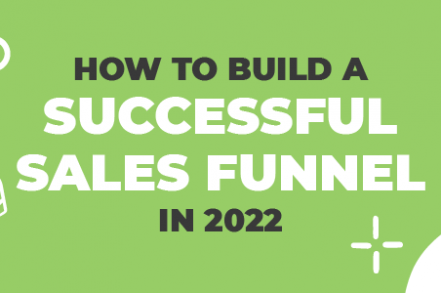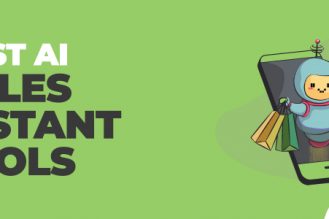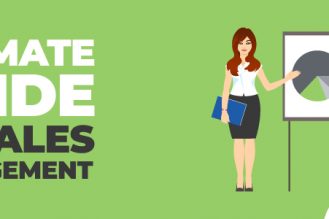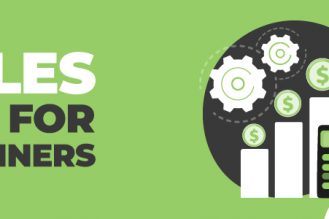Learning how to build a sales funnel is one of the most lucrative skills you can have in 2024 and beyond. Generating leads is important, and that’s why it is the top priority for most businesses. Let’s look at how to create great sales funnels for your brand:
What is a Sales Funnel?
A sales funnel is a series of steps that a business uses to guide prospects into becoming happy paying customers.
Sales funnels typically involve a combination of various channels such as SEO, social media, PPC, landing pages, sales emails, and live sales calls.
Why Do Sales Funnels Matter?
Let’s look at some of the main benefits of sales funnels, and why most brands should be using them:
- Automation – If a process can be automated, it should be in order to save time and scale a proven result. What’s more, 88% of SMBs report that automation allows them to compete with bigger brands.
- Track Customer Behavior – A sales funnel helps you understand the path your customers take. When prospects drop off at a certain point in your funnel you can make corrections to increase overall conversions.
- Follow Up – This is important because the longer you wait to follow up, the more chance another vendor will earn the customer’s business.
How to Build a Sales Funnel (Step-by-Step)
Building your sales funnel is crucial for moving prospects from mere awareness of your company to becoming raving loyal fans. In addition, you can track data about your prospects through each stage of the funnel to ensure you’re nurturing them correctly.
If you want to build a sales funnel quickly and effectively, just follow these steps below:
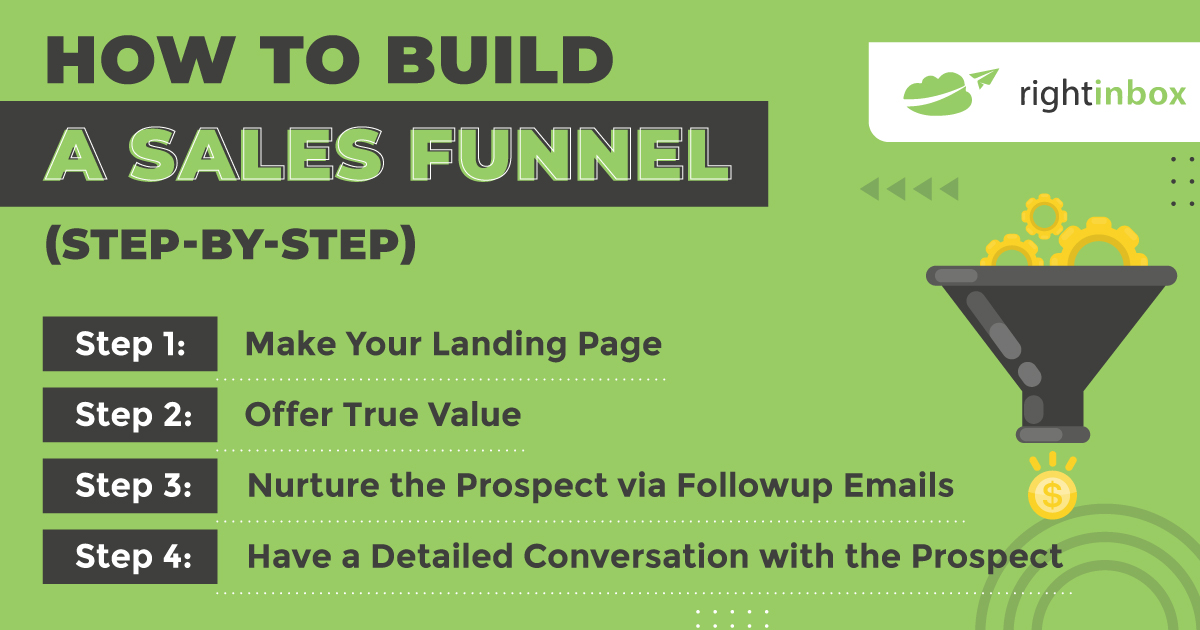
Step 1: Make Your Landing Page
This is the first chance you have to make a great impression on your market. You should quickly get to the point about what problem you’re helping them solve, so they know they’re in the right place.
To send traffic to your landing page, you can use email campaigns, social media ads, or traditional media.
Step 2: Offer True Value
Most people focus so much on selling on their landing page that they forget to offer value. You want to incentivize your visitors to hand over some type of information that you can use to follow up with them later.
In order to achieve this, consider creating something really valuable like hard-to-find information, and providing it for free in exchange for an email address.
Step 3: Nurture the Prospect via Followup Emails
The reason that email is still so effective is because you can directly contact your prospects no matter what. You don’t need to worry about Facebook or Instagram or the next hot social media company limiting your reach. Continue to send valuable content to them and then ask them to speak live with a sales representative over Zoom or the phone.
Step 4: Have a Detailed Conversation with the Prospect
Whether via live chat, video chat, or a phone call, you should aim to have a real conversation with each qualified prospect. That way, you can craft a custom proposal for them and close the deal. If you prefer a more automated sales process, you can create a webinar or sales page that overcomes common objections and then includes a purchase form.
Building a Sales Funnel (With Examples)
Creating a sales funnel involves creating specific messaging and webpages to take your prospect from “barely interested” to “happy buyer.”
To do that, we need two things:
1. Customer Avatar
2. The 4 Funnel Stages
1. Create a Customer Avatar/ Persona
Your customer avatar or persona is a virtual representation of your ideal buyer that represents their wants, needs, and pain points. This way, every part of your sales funnel will speak directly to your avatar.
When creating your customer avatar, include information such as:
- Age
- Income
- Gender
- Occupation / Job Role
- Hobbies
- Daily Challenges
- Dreams and Goals
Once you have your avatar created, you’re ready to start building out your funnel steps:
2. The 4 Funnel Stages
Your messaging should be appropriate for your prospect’s level of awareness (their familiarity with your solution).
To do this, use the classic formula, AIDA:
- Attention (Low Aware Prospect) – Generate initial attention and introduce the prospect to your brand.
- Interest (Some Aware Prospect) – Further describe your product’s benefits and features.
- Desire (High Aware Prospect) – Tie your product’s benefits to emotional benefits for the prospect.
- Action(Most Aware Prospect) – Ask the prospect to purchase your product, becoming a customer.
Here are some specific ways to create these four stages of the sales funnel:
1. Attention
There are infinite ways to generate awareness for your brand, but PPC ads are a tried and true method.
Create Google Ads or other paid ads to get your brand in front of prospects in the first place.
Keep in mind at this stage that they don’t have any awareness about your product or service yet. And they might not even know a solution exists to their problem.
So create a top-of-the-funnel advertisement that simply calls out the prospect’s pain point and promises a solution (without getting into too many details):
Example: PPC Ad Introducing Your Solution and Brand
Ad Headline: “Need Investors for Your Startup? Click Here!”
Ad Body Copy: “Quickly connect with investors online using XYZ.com, the #1 platform for startup financing.”
Seeing the importance of this attention stage, partnering with PPC experts can supercharge your brand’s visibility through targeted Google Ads, ensuring that your message reaches prospects who may not even be aware of your product or service yet.
2. Interest
In the interest stage, the prospect has already interacted with your brand via your first step in the funnel, such as a PPC ad. They are aware that a solution exists to their problem, but they need more information.
Now it’s time to provide some facts and figures that keep your prospect engaged.
Example: Landing Page Explaining Your Product
Headline: “See why 10,000 startups use XYZ.com to get venture capital”
Body: (Explain the core of what your product or service provides. Use additional statistics, figures, and other interesting information to encourage the prospect to keep reading).
Call-to-Action: “Learn How it Works”
3. Desire
Assuming your prospect clicked on your call-to-action button in the previous sales funnel stage (interest), you’ve got a highly aware prospect.
They now know what your company is, what you do, and some interesting facts or features about your solution. They’ve indicated they want to learn more by navigating to the next stage in your funnel: desire.
Whereas before you created content with objective information, now you want to tap into emotion.
Example: Product Demonstration Video
Create a video that will emotionally involve your prospect. You want them to imagine themselves enjoying the end result — or benefits — of using your service.
Some great ways to do this are:
- Show other happy customers providing testimonials
- Use positive, upbeat music in the background
- Walk prospects step-by-step through using your product
- Ask questions that build value, such as: “What would having more venture capital mean to your business?”
See how Right Inbox have done this for their short 2 minute Demo Video:
4. Action
Action is the fourth and final stage of the sales funnel. It’s arguably the most important part of your funnel, but luckily it’s the easiest to create.
In essence, the hard lifting of your sales funnel was done in the previous three stages, now it’s a matter of directly asking your prospects to finally become customers.
Example: Discount + Call-to-Action
Once you’ve engaged your prospect emotionally with a product demonstration/presentation, it’s time to ask for their business.
One great way to turn leads into conversions is by making them an offer they can’t refuse. Provide an attractive one-time discount for prospects who buy right then and there, paired with a “buy now button.”
If you created great funnel steps before this point, that’s all you need to do.
The Importance Of A Sales Funnel
A sales funnel is a very valuable part of any organization. Some of the many reasons for that are:
- Gives You A Goal – You can’t hit a target that you can’t see. A funnel gives you guidance on where you’re trying to go. It’s partly science, but more importantly it’s the art of honing your organization’s efforts towards a common goal.
- Unify Digital Strategy – Your website, email, advertisements and other digital campaigns should be aligned. A sales funnel gives you a North Star to ensure your customers are served and your company is making profits.
- Understanding The Numbers – If prospects are dropping off your funnel, you can figure out which step needs to be improved. If you’re just winging it, you won’t have that clarity.
How To Define Your Sales Funnel
So how do you go about creating your sales funnel and honing in on what it is actually going to be — not just a dream in your head?
Let’s talk about some steps to take along the way:
1. Set Your Goals
The best way to bring structure to your sales funnel is with goals. In your goal setting, attach specific metrics and timelines. For example, if you’d like to convert 25% of visitors to email subscribers by May 30th, that’s better than simply saying “increase email prospects.”
2. Bring In Stakeholders
Creating a sales funnel is a complex dance between various departments. Design, copywriting, technical operations, and customer service should be in sync.
If any managers will be directing the sales funnel strategy, ensure they are on the call / meeting when discussing priorities and plans.
3. Ask Your Prospects
Ultimately, the best tip for creating a sales funnel is asking your market what they want. You can brainstorm all day or week with your internal team.
But sending out surveys, or otherwise getting feedback from real people who are potential buyers will be the best guidance for your funnel. You need to meet them where they are in their life psychologically.
4. Implement
Begin crafting your sales funnel. Write the landing page copy, integrate various payment apps, autoresponders, or anything else that needs to execute when someone moves through your funnel.
5. Review
Marketing is 90% testing and then responding to the results. Unfortunately, you don’t have a crystal ball.
But luckily, you are able to see precise details on conversion rates, bounce rates, sales, refunds, and more. This will help you tweak your sales funnel as time goes on.
Tools to Use For Sales Funnels
Technically, you can create a sales funnel from scratch. But due to the multitude of channels and technologies, marketers must integrate, using a specialized tool is a big advantage.
Some of the most popular sales funnel tools today are:
ClickFunnels

ClickFunnels helped to popularize awareness around sales funnels with its easy-to-use software. You can create visually appealing web pages and landing pages, as well as integrate Facebook and other marketing channels seamlessly.
Pricing: $97 / month
Leadpages
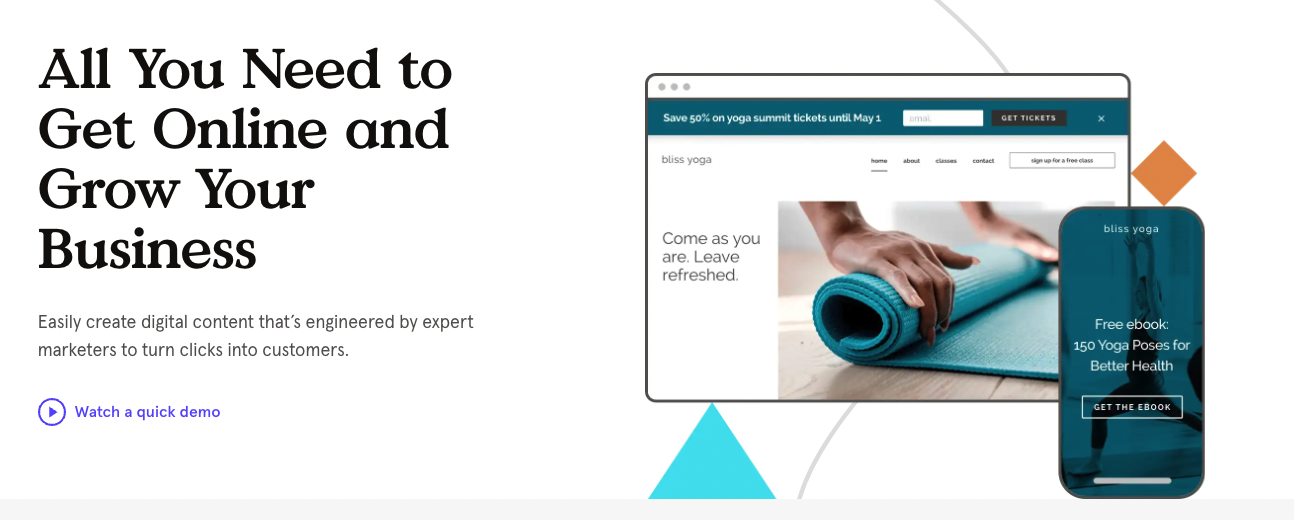
Leadpages is another sales funnel software that makes it simple to set up high converting landing pages. Its drag-and-drop editor makes it accessible to anyone on your team when creating a stage of your funnel.
Pricing: $25 / month
GetResponse
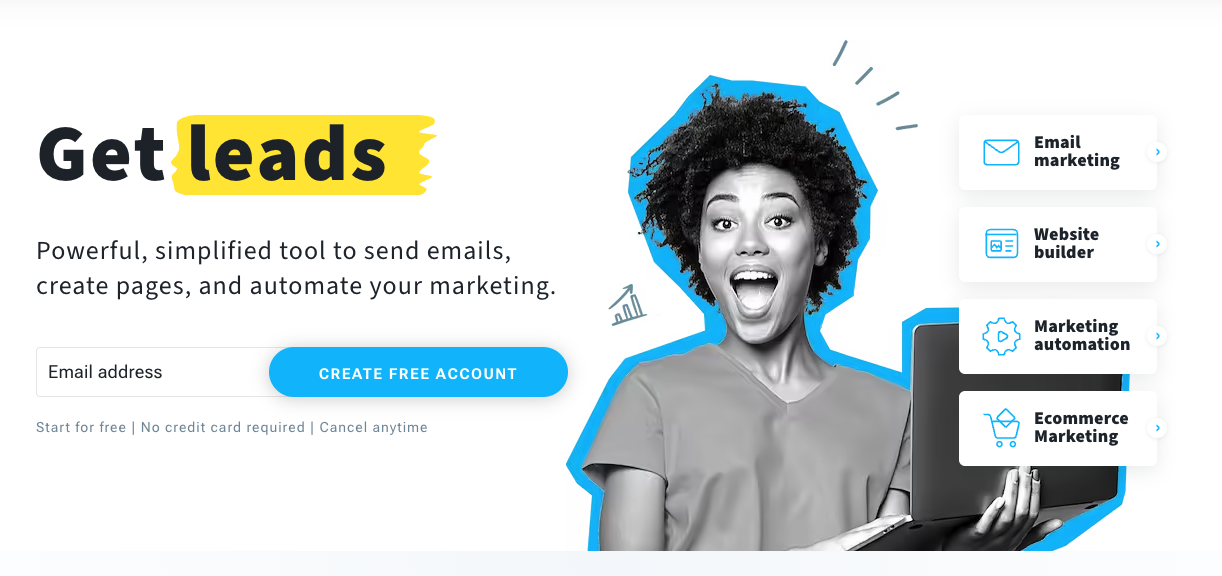
GetResponse is an excellent tool for teams and entrepreneurs looking for a “done-for-you” solution. The software essentially creates the funnel structure for you, allowing you to fill in your own content where needed.
Pricing: $15 / month
There are few concepts more important to the modern brand than a sales funnel. It is a powerful and systemized way to guide your target audience along their buying journey.
Creating a successful sales funnel in 2024 requires creativity combined with a deep knowledge of your market. Using the tips above, you can create an online sales process that drives more revenue for your business now and going forward.
Sales Funnel Frequently Asked Questions (FAQs)
How is a sales funnel different from a marketing funnel?
A marketing funnel is more geared toward generating interest in your brand from people who are not already familiar with what you do. Once someone is more familiar with and interested in what you do, the sales funnel takes over.
What is the difference between a sales funnel and a sales pipeline?
A sales funnel brings people from hardly knowing about you to becoming a loyal fan or customers. The sales pipeline is similar, however, the pipeline typically explains more about the quantity and quality of the leads at any time throughout the process.
What are the 4 stages of the sales funnel?
Attention, Interest, Desire, and Action are the 4 stages of a sales funnel. Attention is at the top of the funnel, while action is at the bottom.
Which sales funnel software is the best?
ClickFunnels is the most well-known sales funnel software, and many believe it to be the best available.
Track emails, email reminders & templates in Gmail for free
Upgrade Gmail with the features it’s missing
Add to GmailDavid Campbell
David Campbell is the editor of the Right Inbox blog. He is passionate about email productivity and getting more done in less time.
